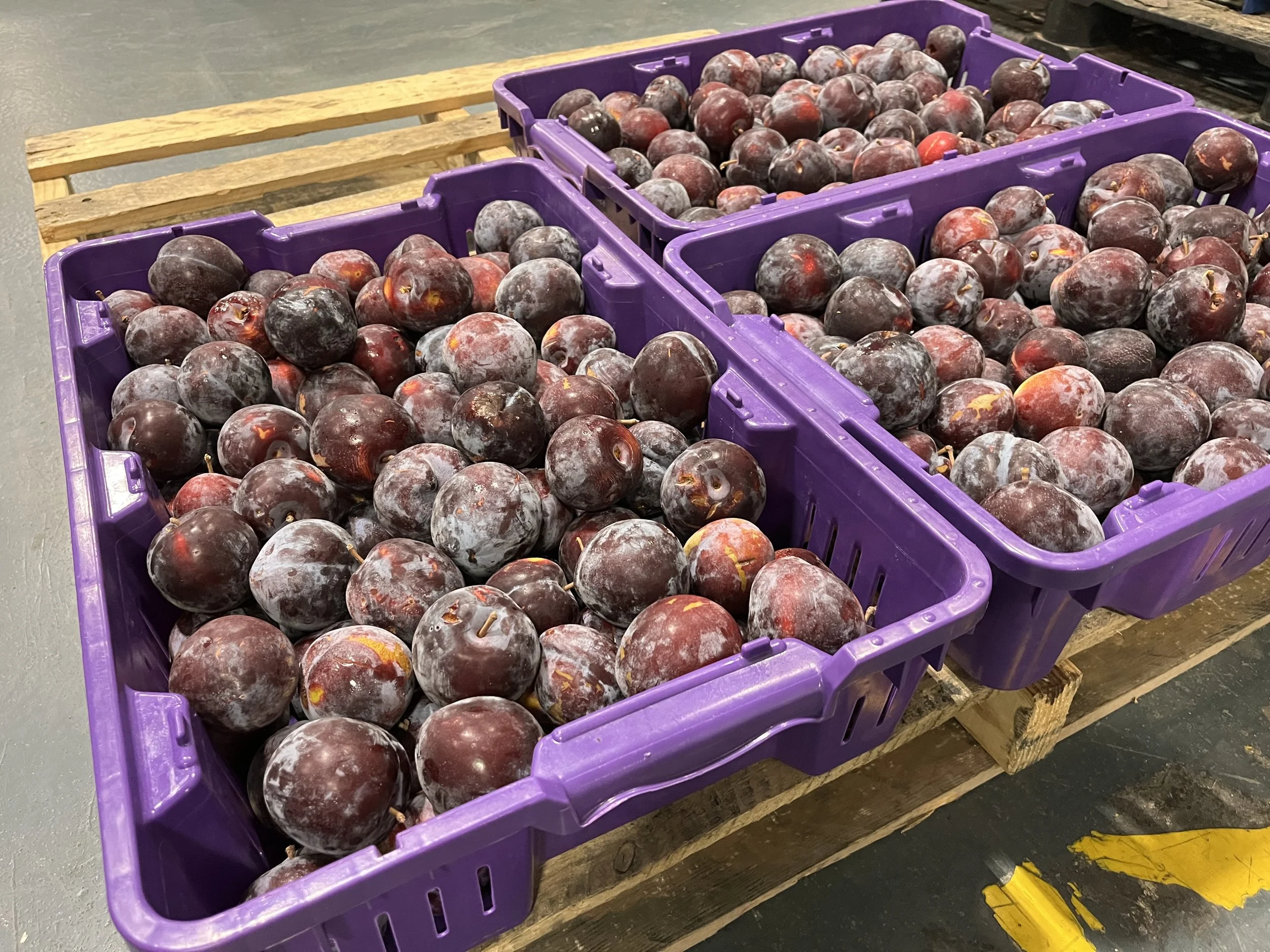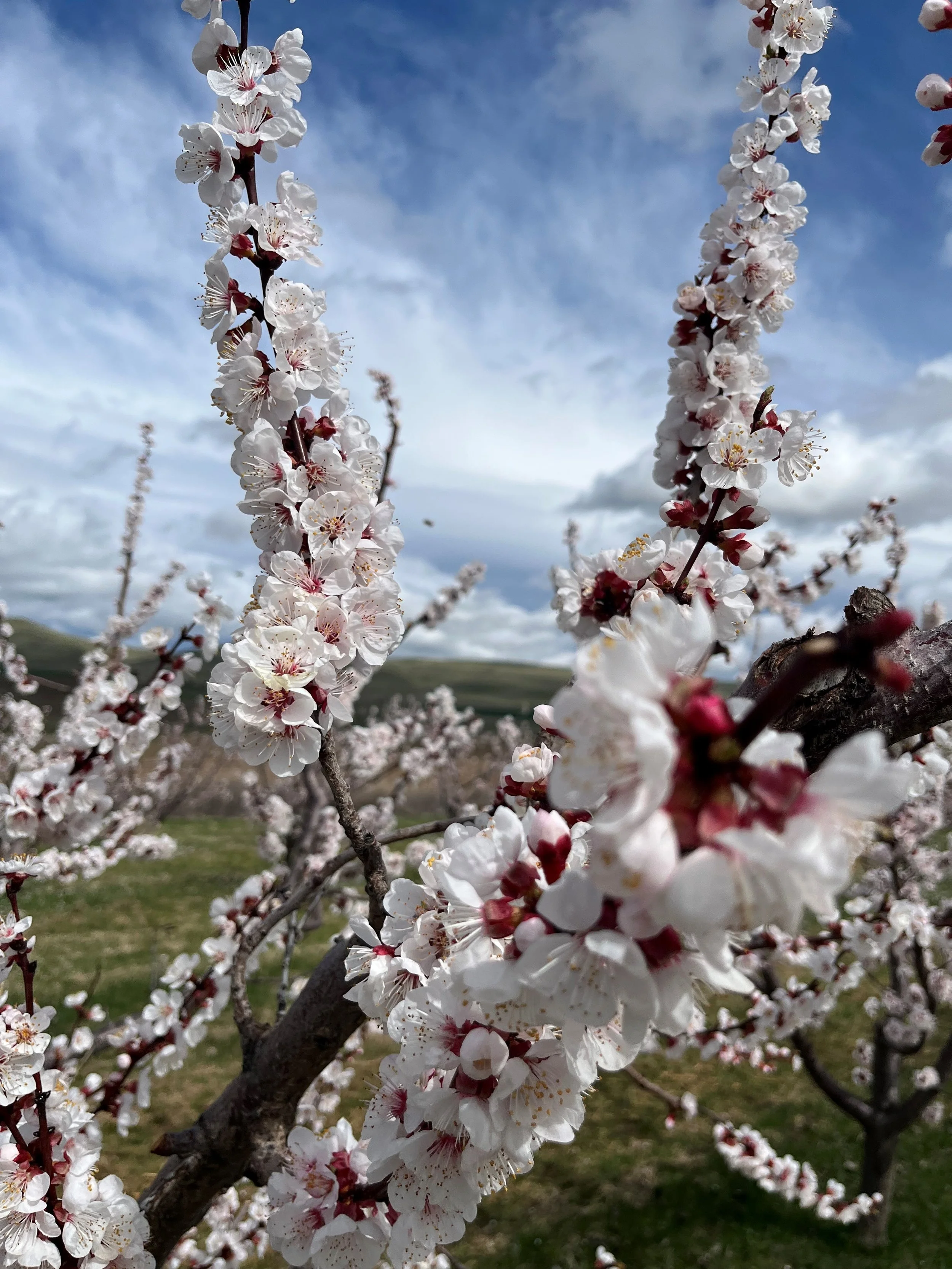What a Plum Harvest Is Teaching Us About Food Waste
New Seasons Market & PCFWC visits Organically Grown Company
What do juicy organic plums, a small Washington family farm and sustainability have in common? A recent study led by the Pacific Coast Food Waste Commitment (PCFWC) and PCFWC resource partner World Wildlife Fund brought them together and OGC was right in the middle of it.
The mission? To figure out how to cut down on food waste from the moment plums are picked, to when they reach New Seasons Market, located in the greater Portland area.
Spoiler: The results were pretty sweet.
The Plum Problem (and Opportunity!)
Plums are delicious but delicate. Their thin skin bruises easily, and unpredictable weather can rush ripening. That means plums need to be harvested, handled and sold quickly or they go to waste.
So how do we keep plums fresh from the orchard to the store without losing fruit along the way? OGC teamed up with PCFWC, the Global Impact Collective, JL's Organic Orchards (our grower partner in Central Washington) and New Seasons Market to find out. Over five months in 2024, the team tracked two plum varieties, Black Friar and Red Simka, across Oregon and Washington.
OGC's Role: Keeping It Cool, Keeping It Fresh
As a key supply chain partner, OGC bought the entire harvest from JL's Organic Orchards. We provided refrigerated trailers to cool the fruit right after it was picked, slowing ripening and extending shelf life. This cold chain process is critical because plums left too long in the field unrefrigerated can overripen or spoil.
Once the plums arrived at OGC's Portland facility, they were sorted into three categories: Premium, Choice and Utility. Unlike most distributors, OGC doesn't stop at selling only the prettiest plums. Utility-grade fruit — perfectly edible but maybe a little soft or scarred — found homes with local processors instead of going to waste. Think plum brandy!
What We Learned
The study uncovered some awesome takeaways:
Refrigeration Matters: Cooling plums right after harvest makes a huge difference. Farms with onsite refrigeration or quick access to cold storage see less food loss.
Buy the Whole Harvest: OGC's whole-harvest buying model ensured that even the not-so-perfect plums had a purpose. By sorting fruit, OGC helped a farmer sell more of their crop — a win for farmers, customers and the planet.
Flexibility is Key: Grading fruit by category allows more plums to reach customers. Plus, building relationships with local processors gives "imperfect" fruit a second life.
Why It Matters
Food waste isn’t just about throwing away fruit. When food ends up in landfills, it releases greenhouse gases, including methane, which is 28 times more potent than carbon dioxide and a major contributor to climate change. Reducing food waste not only saves delicious organic plums; it helps protect our planet.
This study proves that with creativity, communication and a commitment to supporting local growers, OGC and our partnerships can make a real difference.
What’s Next?
The results of this study are just the beginning. The solutions tested here — better forecasting tools, gleaner partnerships and secondary markets for edible but imperfect fruit — can be applied to other fruits too, like peaches and nectarines.
At OGC, we stand up for organic farmers and work together for a sustainable future. Reducing food waste is just one piece of the puzzle because every plum saved counts.





